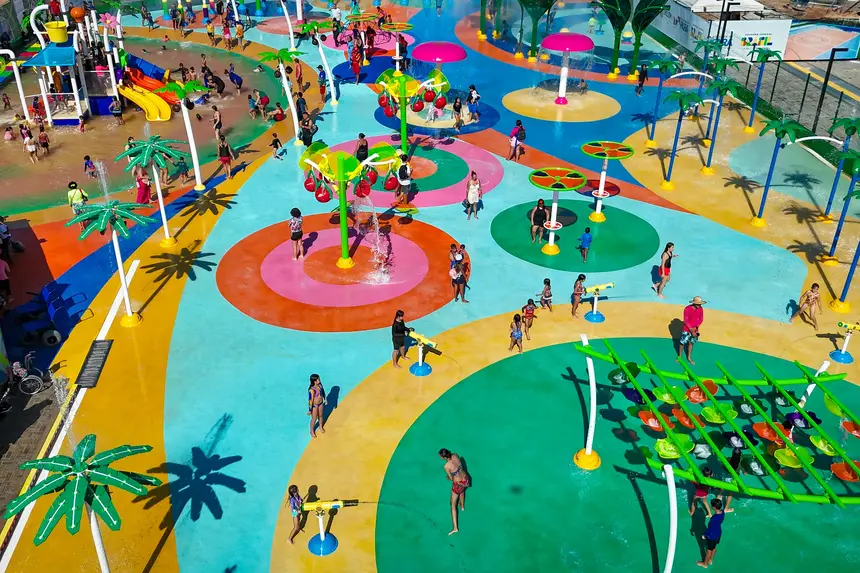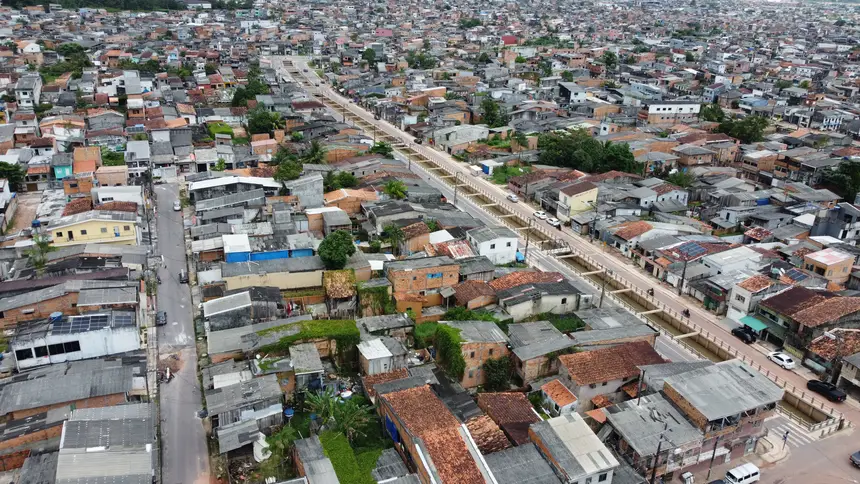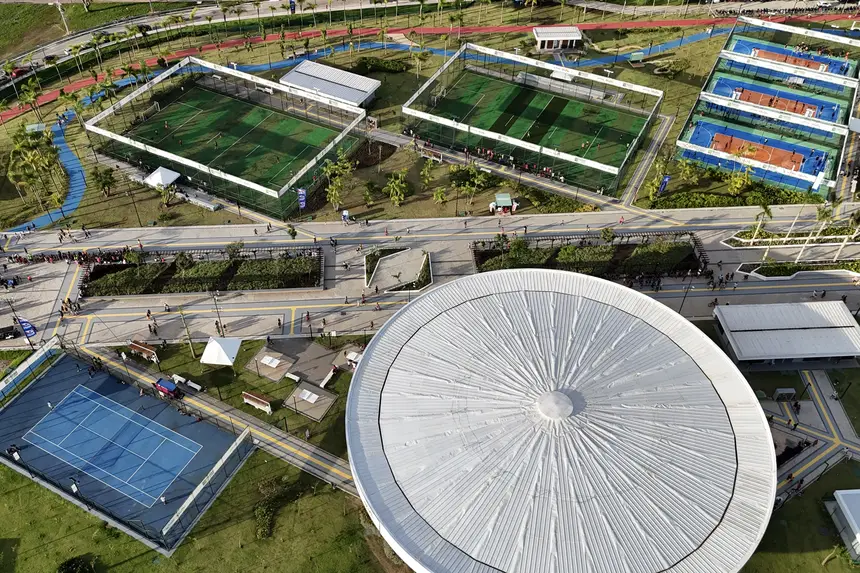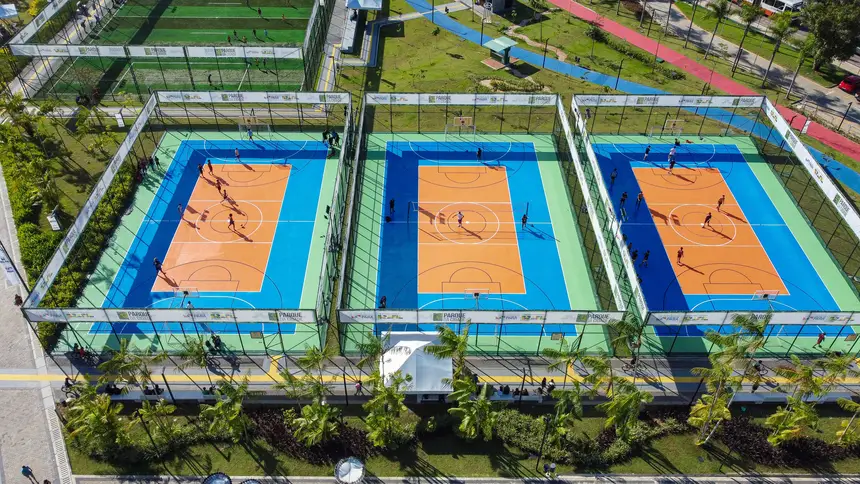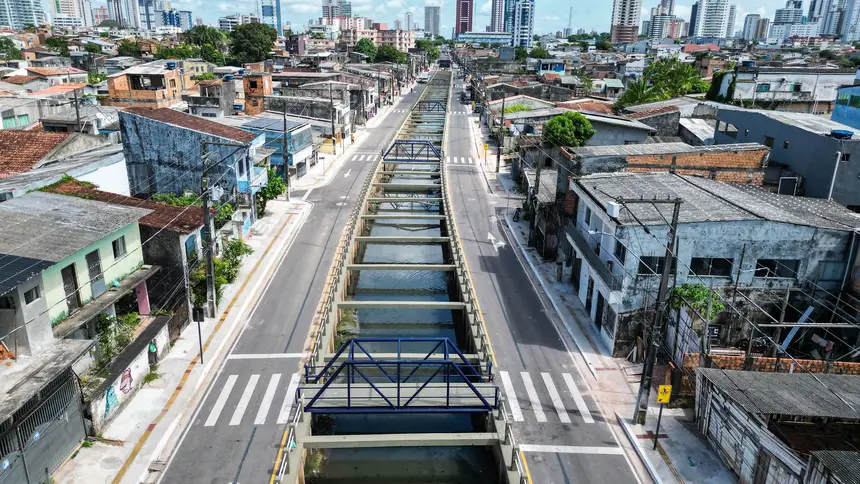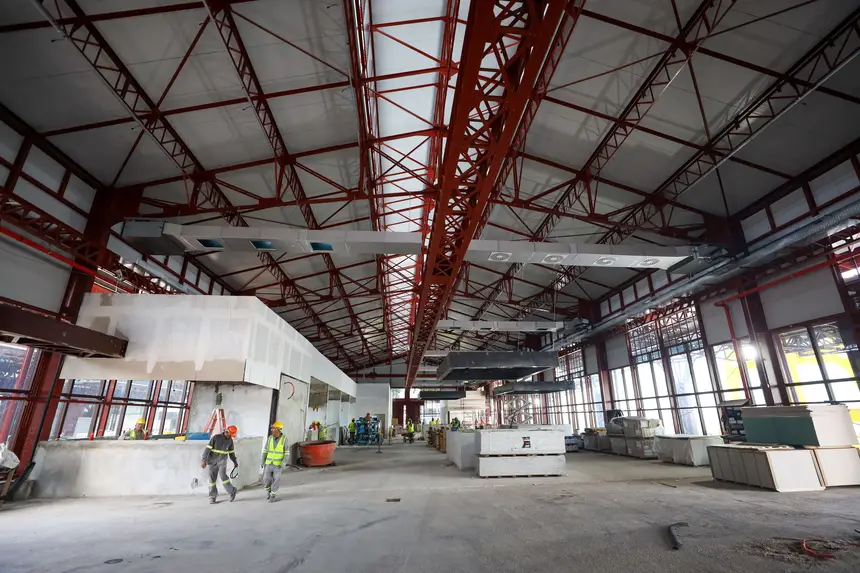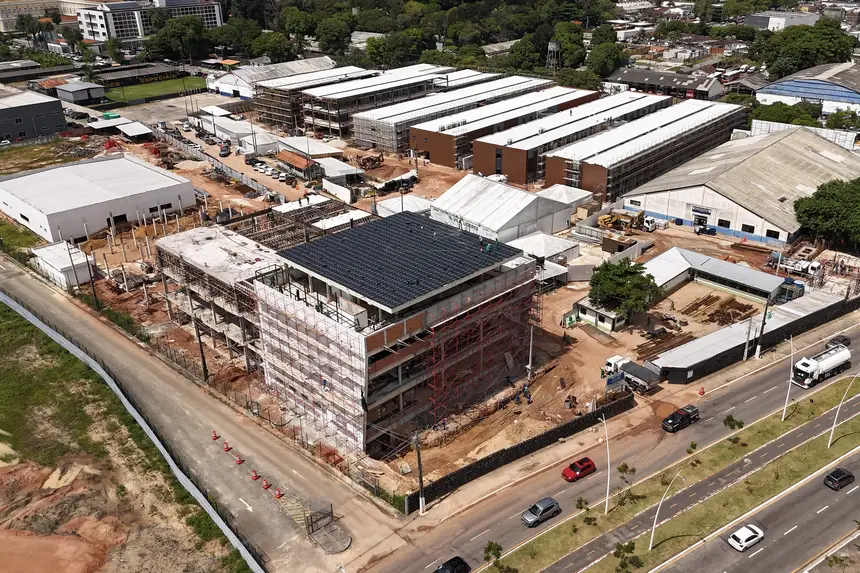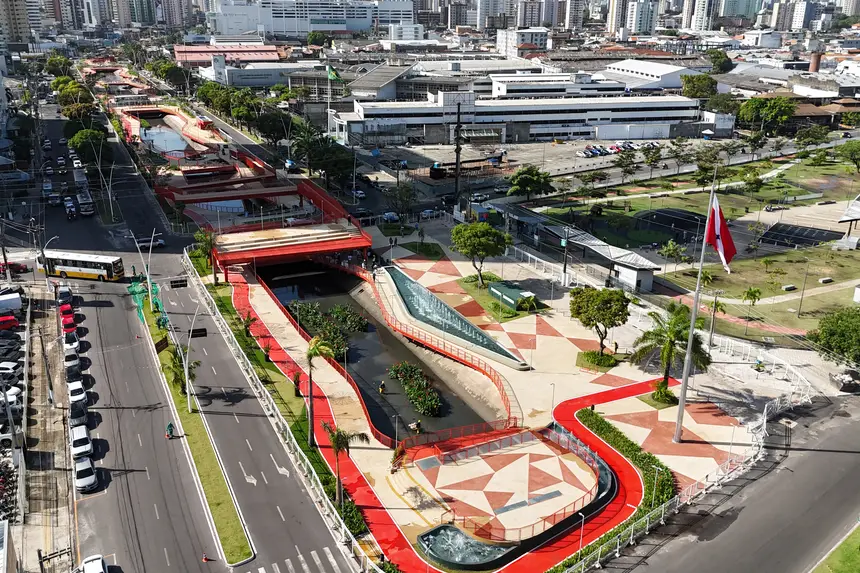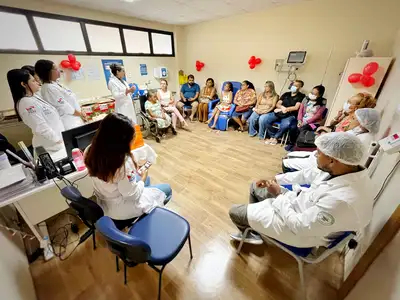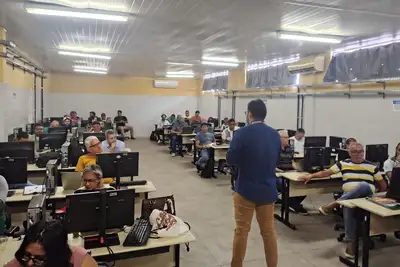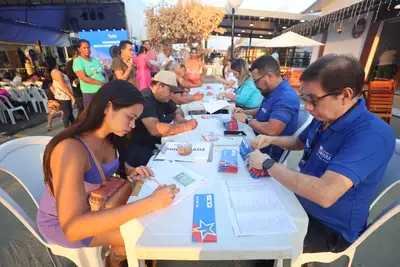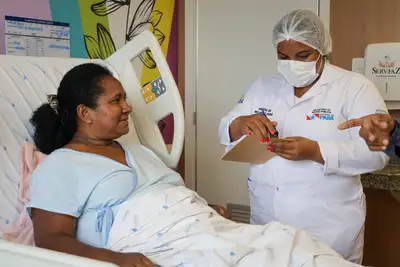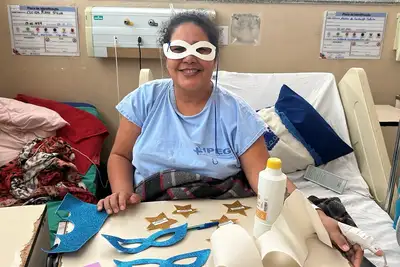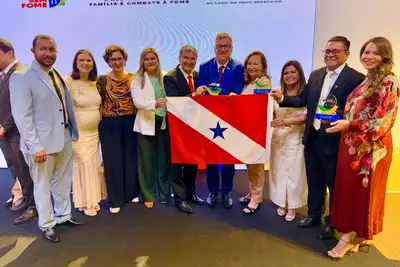Government of Pará presents advances and accelerates investments 100 days before COP 30
Works in peripheral neighborhoods, new infrastructure with expanded green areas, and qualification programs ensure a social, environmental, and economic legacy for Belém and all of the Amazon
Exactly 100 days before the start of the 30th United Nations Conference on Climate Change (COP30), the Government of Pará consolidates works and public policies that transform the reality of the population in the Metropolitan Region of Belém. There are more than 30 structural interventions in the areas of tourism, sanitation, urban mobility, territorial development, and professional qualification. Together, the initiatives generate more than 5,000 direct and indirect jobs.
The event will take place from November 10 to 21, bringing together leaders from 196 countries in the capital of Pará to discuss strategies to combat climate change and greenhouse gas emissions, as well as to establish a new global pact, ten years after the Paris Agreement. This will be the first time the conference is held in Brazil, in a state of the Amazon.
“Belém will show the world that it is possible to reconcile development with a living forest. COP30 is the result of a process that involves planning, responsibility, and action. We are ready to lead the global climate debate with concrete solutions and real transformations for the people of Pará,” says Governor Helder Barbalho.
Works change lives in neighborhoods
The greatest legacy of COP30 lies in social and urban investments. The Government of Pará has allocated more than R$ 1 billion for macro-drainage and sanitation works, directly benefiting more than 500,000 people with sewage disposal, flood control, and urban enhancement. The interventions reach 13 channels in the basins of Tucunduba, Una, Murutucu, and Tamandaré, with 11 channels located in peripheral areas.
The channels of Timbó, Cipriano Santos, Vileta, Leal Moreira, and the first stage of the Gentil channel have already been delivered. Work fronts are advancing towards the completion of works on the Nova Doca (92%), Nova Tamandaré (87%), Gentil (98%), and Marambaia (85%) channels.
Another important milestone is the implementation of the sewage system in Ver-o-Peso, the largest open-air market complex in Latin America. With more than 90% of the works completed, the project provides for more than four kilometers of network for the collection and treatment of sewage generated by properties and businesses in the region. The initiative represents a leap in the quality of life for those who live and work in Belém's main postcard.
“COP30 is not just an event. It is the mark of solid transformation that has already reached the streets, neighborhoods, and lives of people. We are delivering a legacy of infrastructure, culture, inclusion, and sustainability. These are visible results that will remain for the population, far beyond the 12 days of the conference,” highlights the Vice Governor of Pará and President of the State Committee of COP30, Hana Ghassan.
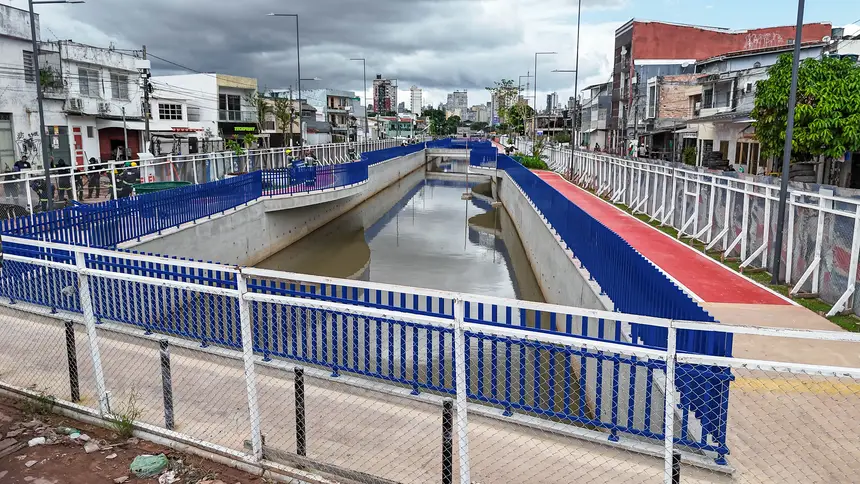
Porto Futuro II: culture and bioeconomy
At Porto Futuro II, where historic warehouses are being restored, 93% of the works have already been completed. Soon, the old industrial port of Belém will host the following cultural spaces:
- Museum of the Amazons, focused on valuing the immaterial heritage of the region;
- Bioeconomy and Innovation Park, a place to encourage the local and Amazonian economy, and
- Caixa Cultural, which will bring to the North Region a facility with excellent artistic programming, already recognized in other capitals of Brazil.
Low-carbon urban mobility
Mobility works are advancing, prioritizing efficiency and sustainability. One of the highlights is the Metropolitan BRT, which has already reached 85% completion. The project modernizes BR-316 up to the municipality of Marituba and includes five overpasses to reinforce the road network in the region. The system will feature Euro 6 diesel buses, which emit 15 times less carbon than conventional models, as well as electric vehicles, with zero gas emissions and low noise levels.
Other mobility works include:
- Expansion of Rua da Marinha;
- Construction of the second access bridge to the Outeiro District;
- Restructuring of eight roads, including Duque de Caxias, Visconde de Souza Franco, and Tamandaré avenues;
- Belém COP 30 Road: 60% completed, with paving and new signage on central and peripheral roads;
- Three overpasses already delivered: BR-316 with PA-485, BR-316 with Avenida Independência, and Mário Covas with Avenida 3 Corações, and
- Mário Covas overpass with Independência - 80% of the works already executed.
City Park: the heart of COP30
Built on the site that housed a small airport in Belém, City Park represents the largest investment in public leisure and coexistence space in the capital. It covers 500,000 m², with more than 2,500 trees planted, 190,000 seedlings of shrubs and ground cover, 83,000 m² of grass, bike paths, a lake, sports equipment, and buildings such as the Creative Economy Center and the Gastronomic Center. In just over a month of operation, the space has received more than 500,000 visitors.
In July, the leisure area of City Park hosted the largest public vacation colony in the Amazon. More than ten thousand people, including children and the elderly, participated in various programs, which included sports activities, storytelling, cultural workshops, and well-being promotion actions.
Starting in mid-August, the space will be under the responsibility of the Federal Government and the United Nations (UN) for the installation and assembly of the pavilions of the Blue Zone (official negotiations) and the Green Zone (civil society), the official areas of COP30 that will host meetings, forums, cultural panels, and global debates.
Accommodation
The organization expects around 50,000 people to participate in COP30. To accommodate this audience, the Government of Pará is working in an integrated manner with the Federal and Municipal governments, as well as the private sector, to increase the supply of beds. The strategy includes the renovation of existing hotels and the construction of new hotel enterprises.
One of these new spaces is Vila COP30, a modular accommodation complex made with rapid construction materials. Currently, with 57% of the works completed, the site will have 405 rooms. After the event, Vila COP30 will serve as the administrative center of the state government.
Other measures adopted:
- Renovation of schools, adapted as temporary hostels during the conference, with new furniture and adequate comfort standards;
- Granting of tax incentives, such as exemption from the Tax on Circulation of Goods and Services (ICMS) for hotel modernization;
- Offering credit lines through the Bank of the State of Pará (Banpará), National Bank for Economic and Social Development (BNDES), and General Tourism Fund (Fungetur);
- Partnerships with Booking.com and Airbnb to increase the supply of short-term rentals and promote Belém as a tourist destination after COP 30, and
- Contracting by the Federal Government of two cruise ships, which will operate as floating hotels to accommodate delegations and heads of state.
Capacita COP30: professional qualification
The Capacita COP30 Program has already trained 22,000 workers in areas such as tourism, services, and infrastructure. Launched in March 2024 by the Government of Pará, the initiative offers more than 100 free courses, with the support of over 25 partner institutions, such as the Social Transport Service (Sest), National Service for Transport Learning (Senat), Support Service for Micro and Small Enterprises (Sebrae), Coca-Cola, and Cielo, as well as state secretariats and universities.
Education and commitment to the environment
More than just a set of works, the legacy of COP30 for Pará is expressed in lasting environmental and educational policies. In 2024, the State recorded a 28.4% reduction in deforestation, following declines of 21% in 2023 and 2022. The data comes from the National Institute for Space Research (Inpe-Prodes 2024).
The Environmental Responsibility Law has also been enacted, which guarantees the transfer of 50% of the collection of the water fee and 10% of the mining fee to the State Environmental Fund.
The state government has also created important structural initiatives, such as:
- State Plan for the Amazon Now (PEAA);
- State Bioeconomy Plan of Pará (PlanBio);
- Plan for the Recovery of Native Vegetation of the State of Pará (PRVN-PA);
- Jurisdictional System of REDD+, and
- Pará Without Fire Program, with satellite monitoring, scientific prevention, brigade training, and action in 22 risk zones.
Environmental education
The subject of Environmental Education has become mandatory at all levels of education. The Formal Education Policy for the Environment, Sustainability, and Climate guarantees direct resources for schools through the Money in the Pará School Program.
“Pará has taken the lead on the environmental agenda with courage, innovation, and commitment. We have reduced deforestation, created new public policies, and shown that it is possible to generate development responsibly. COP30 is the showcase, but the true legacy lies in the future we are building today,” concludes Governor Helder Barbalho.
Armed Forces at COP30
To ensure the security and defense of COP30 in Belém, the Marajoara Joint Operational Command, a structure of the Ministry of Defense, will integrate the Army, Navy, and Air Force. About 12,000 military personnel will work to maintain public order and protect authorities, international delegations, and the population. The Brazilian Army is responsible for organizing the Joint Command, which will also count on the cooperation of public security agencies. The Navy will employ means and vessels, and the Air Force will use aircraft to protect strategic areas and provide logistical support.
To operate in specific scenarios, the Armed Forces are intensifying training and will employ Specialized Strategic Employment Forces, including air defense, chemical, biological, radiological, and nuclear defense, electronic warfare, cyber defense, special operations, escorts, and intelligence. The goal is to strengthen inter-institutional integration at the federal, state, and municipal levels. The missions will be similar to those already executed in previous major events, such as the G20 meeting in 2024 and the BRICS Summit held this year in Rio de Janeiro.
“We will operate jointly, where the union of the three forces will enhance the effects of operational security and defense activities during this great diplomatic event. But there are also the specificities of each area, land, sea, and air, where our troops will be engaged in the best possible way to fulfill the missions,” says the head of the Joint Operational Command, Army General José Ricardo Vendramin Nunes.


